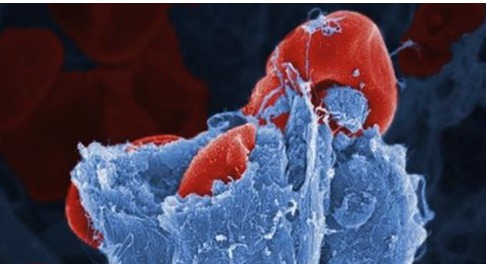Crane Electric Cabinet,Overhead Crane Electric Cabinet,Crane Electrical Cabinet,Gantry Crane Electric Cabinet Eurocrane (China) Co., Ltd. , https://www.rope-hoist.com According to reports from foreign media on the 13th, scientists at Lancaster University in the United Kingdom have developed a non-invasive laser detection method that can predict a person's death time. This type of testing device will use a wristwatch design to analyze capillary lining cells with a laser beam to encourage users to choose and maintain a healthy lifestyle. Lancaster University scientists have developed a non-invasive laser detection method. Predicting a person's time of death The inventors have shown that blood vessel lining cells are an endothelial cell and a key indicator of a person's health. By monitoring these cells, one can determine which people are aging faster than normal. After testing, the user can understand how long they have lived. For example, such testing equipment will tell users that if they do not change their current lifestyle, they will die within 20 years. In addition, this endothelium test can also determine if the user is at risk for cancer or dementia. The endothelium is an endothelial cell layer within the capillaries.
According to reports from foreign media on the 13th, scientists at Lancaster University in the United Kingdom have developed a non-invasive laser detection method that can predict a person's death time. This type of testing device will use a wristwatch design to analyze capillary lining cells with a laser beam to encourage users to choose and maintain a healthy lifestyle. Lancaster University scientists have developed a non-invasive laser detection method. Predicting a person's time of death The inventors have shown that blood vessel lining cells are an endothelial cell and a key indicator of a person's health. By monitoring these cells, one can determine which people are aging faster than normal. After testing, the user can understand how long they have lived. For example, such testing equipment will tell users that if they do not change their current lifestyle, they will die within 20 years. In addition, this endothelium test can also determine if the user is at risk for cancer or dementia. The endothelium is an endothelial cell layer within the capillaries.
Physicists at Lancaster University hope this technology can help people improve their health. Some people also questioned the effectiveness of this technology. Some users may therefore change their lifestyles and thus put their bodies in the best condition. Others may believe in fatalism and will not make changes. In addition, insurance companies and pension funds may also use this information to adjust insurance premiums and pensions.
Currently, physicists at Lancaster University have developed a bulky experimental prototype. They are using this prototype for small-scale design, and ultimately let the laser detection device be worn on the wrist like a watch. They said that if they can get enough funds, they can bring the mini version to market within a year.
The laser detection method developed by British scientists can measure the blood volume of vascular endothelial cells, and then determine the health status of a person. The cost of this laser detection device is a few hundred pounds. Users can use it at home to monitor their health. Used in GP clinics and hospitals. Doctors can use this device to compare the biological age and actual age of patients to understand their aging rate. In tests conducted on 220 physically healthy participants, some participants experienced significantly faster or lower than expected rates of aging.
Prof. Anetta-Stefviska, the project leader, said: "In the near future, a testing device that sells for between 200 pounds and 300 pounds (approximately 300 dollars to 460 dollars) can enter millions of households. I hope that the technology we have developed will encourage people to pay more attention to their own health." The laser detection device was jointly developed by Stefan Weskar and colleague Peter McClintock and has now applied for a patent.
Stefan Weska pointed out: "We hope this device can be applied to all GP clinics. They can become an invaluable medical device for general practitioners. With this device, doctors can understand the patient's The cardiovascular system, to determine if they have a risk of stroke or heart disease, and to know if there is a problem with the endothelium. The endothelium secretes various chemicals that can affect the tissue. It is also an important organ, but it has not received much attention."
Professor McClintock admitted that not all people will change their lifestyles because of the information provided by this detection device. He said: "You may think that your aging is too fast and you should take steps to contain it. You may therefore change your lifestyle, eat less fried bars and run regularly. Of course, you may also ignore this information.
Scientists develop laser detection watch